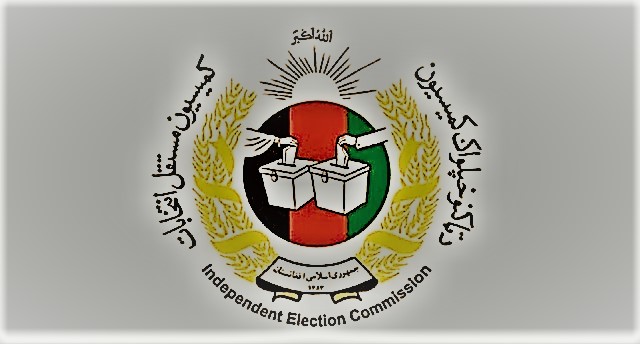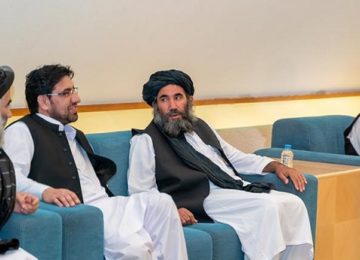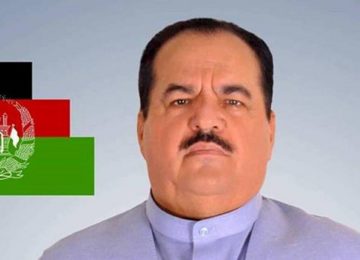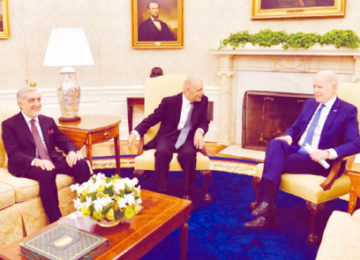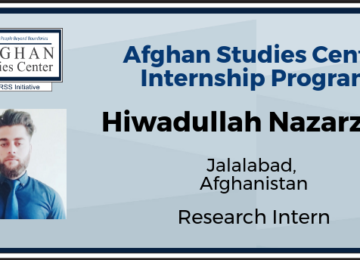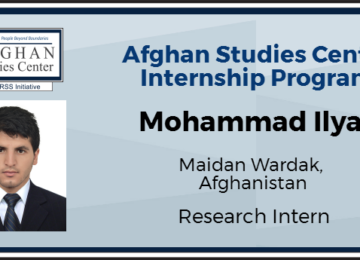Afghanistan’s parliamentary elections are scheduled for 20 October this year, three and a half years late. They were delayed so that the electoral system could be reformed – although what that delay achieved in terms of reforms, is questionable. The country’s first district elections are also still scheduled for the same day, although the Independent Election Commission (IEC) has proposed a delay to them and to the Wolesi Jirga elections in Ghazni province. In general, multiple, serious problems are emerging ahead of October’s planned elections, to do with, among other things, insecurity, voter registration, controversies over the two institutions charged with overseeing the vote and, less than three months before the poll, a call by some major political parties to change the election system. Not surprisingly, given the uncertainty over so many aspects of the parliamentary elections, doubts are increasing as to how good and inclusive they can be.
With October’s Wolesi Jirga elections, Afghanistan’s third electoral cycle will be completed for three important institutions (the presidency, parliament and provincial councils). The third presidential (together with provincial council) elections were held on 5 April 2014. This poll revealed problems in the election-related institutions and the overall electoral framework, including related legislation.
The 2001 Bonn agreement on Afghanistan had stipulated that presidential and parliamentary elections be held simultaneously, “if possible.” It turned out to be impossible to do so during the very first electoral cycle, planned for 2004 and the presidential election went ahead separately, so there would at least be one achievement the then-United States president George Bush could point to going into his second term election. The first parliamentary elections were delayed for one year, to 2005.
The first-ever district council elections are still scheduled to be held simultaneously with the 2018 parliamentary polls, but now the Independent Election Commission (IEC) has proposed a delay to them and to the Wolesi Jirga elections in Ghazni province. The election of district councillors was supposed to close some of the gaps in the implementation of various election-related requirements in the country’s constitution. These probably will not happen: sufficient candidates have nominated themselves in less than a tenth of Afghanistan’s districts and the IEC has proposed a delay. This would move the district council elections to April 2019 when presidential and provincial council elections are scheduled, further complicated what should be the start of Afghanistan’s fourth electoral cycle.
The three and half year delay of the parliamentary elections means that, for the first time since the overthrow of the Taleban regime in 2001 and Afghanistan’s embarking on a road toward democracy, the country is completing one electoral cycle (its third) while the next, (the fourth) is about to start. The next presidential elections have been scheduled for 20 April 2019, and it is foreseeable that the aftermath of the parliamentary poll – counting, adjudication and dealing with complaints – will crash into the start of preparations for the presidential and other elections. The delays and the problems resulting from this will likely mirror a significant drop in the quality of the Afghan elections and flag severe shortcomings in Afghanistan’s aspiring democracy.
69 days ahead of elections day, there are any number of unresolved issues to do with the parliamentary elections.
The 20 October 2018 elections
Voter registration and electoral system
Thehead of IEC field operations, Zmarai Qalamyar, on 8 August, gave AAN a precise breakdown of voter registration. He said 9,072,208 had registered – 5,783,037 (63.7%) men, 3,114,942 (34.3%) women and, as separately registered groups, 173,646 (1.9%) Kuchi (nomads) and 583 (0.006%) Hindu and Sikh voters. As of 8 August, the details of more than 3.5 million registered voters have been entered into the IEC’s database, according to IEC chairman Gula Jan Abdul Badi Sayyad. The IEC is currently working to input the remaining registered voters into its central database, before it verifies and approves the final voter list.
AAN’s conversations with national and international election experts show that the IEC’s database can only detect two types of fraudulent voter registration: underage voter registration and multiple or duplicate registration using the same tazkera (national ID) with the same serial number. However, it cannot discover multiple registrations with fake tazkeras which have different serial numbers; these can only be identified by cross-checking with the database of the Afghanistan Central Civil Registration Authority (ACCRA). This understanding was confirmed by Sayed Ibrahim Sadat, the head of the IEC’s IT department, on 6 August, as reported by Tolonews (see here).
To achieve this goal, Sayyad said that the IEC planned to establish a technical joint committee with ACCRA to identify fake tazkeras used in the voter registration. This means that the committee will cross-check the tazkeras used for registration with the ACCRA database. However, the question is whether ACCRA has a credible database for the paper tazkeras and whether there is enough time to ascertain more than the nine million tazkeras. Therefore, it is likely that that many instances of fraudulent voter registration using fake tazkiras may not be unearthed.
Many political parties (1) are questioning the voter registration and said that biometric voter registration should have been undertaken from the start. In addition to this, they have two additional demands: changing the current electoral system, Single Non-Transferable Vote (SNTV), into a system called Multi-Dimensional Representation (MDR) and allowing parties to have an observation room within the IEC to observe preparations for the elections. A joint committee of representatives of political parties, the government and the IEC led by second Vice-President Sarwar Danesh have been discussing these demands in five rounds of meetings, with the first one held on 28 July (see here). On 1 August, the committee held a technical meeting (see here) in which, according to a source from Danesh’s office, a German company called Dermalog had a presentation on the use of “biometric technology,” this less than three months ahead of the poll.
In its last meeting on 5 August, the committee could not agree to the parties’ demands. According to Danesh’s media office, the committee concluded that the government “had stressed the use of biometric technology in elections more than any other organisation in the past. Now if the IEC agrees, the government does not have any problem [with it] and the government also calls on the IEC to pave the way for using this technology in the [next] presidential elections.”
With respect to the parties’ demand to change SNTV into MDR, the vice-president’s media office reported that the committee had concluded that this proposal “in addition to the time constraints, has its own complexity and, thus, requires a broad national debate. Even if this proposal could be passed through a presidential legislative decree, it might still be rejected by the parliament. Therefore, the best way is that the [next] Afghan parliament [should] decide about changing the electoral system.”Since then, the political groups have been saying they will not accept the results of the elections held using the current manual voter registration and in the absence of any change to the electoral system (see this Khabarnama report quoting Anwarul Haq Ahadi, head of the New National Front of Afghanistan). Jamiat-e Islami member Nur Rahman Akhlaqi also told AAN on 9 August that the parties were considering not allowing the elections to be held using the manual voter registration. Any hardening of positions by these political parties could, of course, adversely impact the poll.
Electoral calendar
The IEC is lagging behind in the 2018 elections’ electoral calendar which sets specific deadlines for various important activities. The calendar specified 30 June to 2 July as the timeframe for addressing the complaints against the preliminary candidates’ list; the IEC should have published the final list on 3 August. However, it was only on 4 August that the Electoral Complaints Commission (ECC) announced it had disqualified 25 candidates for having links to illegal armed groups. It gave two days, as per the electoral law, to these candidates to appeal against the ECC decision. That meant that, on 8 August, the ECC was still holding an open session to address the appeals of the disqualified candidates (see here).
The Ghazni problem
In late July, the IEC proposed a postponement of both the Wolesi Jirga and district council elections in Ghazni as well as district council elections in the entire country. The IEC reasoned that “serious security situation and other problems” in Ghazni could prevent fair and inclusive representation from the entire province (media report here). It also argued that as only 40 out of Afghanistan’s 387 districts had an adequate number of candidates standing, this render district elections pointless (see media reporting here). In accordance with the electoral law,both proposals have been submitted to a high-ranking committee that has yet to convene. The National Security Council (NSC), whose members are part of the committee, discussed the IEC proposal concerning both district council elections and elections in Ghazni in its 7 August meeting. According to a report on the website on the presidential palace, the NSC, after “detailed discussions, decided that technical and practical studies and consultation were needed in this regard and asked the IEC to present a report on specific and practical alternatives in this regard for the necessary decision-making.”
The presidential election
During the 1 August press conference, the IEC also announced 31 Hamal 1398 (20 April 2019) as the date for the next presidential and provincial council elections. A day before, on 31 July, the IEC held a consultative meeting with the ECC leadership, representatives of political parties, civil society and international organisations where they discussed this date in terms of “operational, financial and administrative, security as well as climate aspects.” The IEC reported that a “majority” of the participants had agreed with the 20 April 2019 date.
The announcement of the presidential election date has been made well ahead of the legal deadline. The presidential term expires on 22 May 2019. According to the electoral law, the election for a new president should be held 30 to 60 days before the expiry date. This means that the next election should be held between 22 March and 22 April 2019. Article 71 of the electoral law stipulates that the IEC should announce the election date at least 180 days in advance, and publish the electoral calendar at least 120 days before the election day. This means that the respective deadlines are 22 September to 22 November to announce the date and 22 October 2018 to 22 December 2018 to publish the election calendar.
However, the early announcement of the date by the IEC was made in response to a call by the President Ghani. On 22 July, during a meeting in the Palace with the IEC members, the United Nations and the European Union special representatives and a number of ambassadors of countries supporting the elections, the president asked the IEC to “set thepresidential election date and share it with the people as soon as possible.” UNAMA welcomed the announcement as “an important moment for democracy in Afghanistan.” However, some election observers called the IEC’s announcement of the date “a rush.” Executive director of Free and Fair Election Forum of Afghanistan (FEFA) Yusuf Rashid told the media on 1 August that either the date would be missed or the elections would be held [on 20 April 2019] [but with] a myriad of problems. “We are worried about the consequences of the next [presidential] elections,” he said.
The IEC during its 1 August press conference called for the “cooperation of the international community and the government in funding the next presidential election and ensuring its security.” This call for cooperation came a few days after UNAMA had announced on 25 July that “at the third project board meeting to support the upcoming parliamentary and district council elections, a new agreement was signed to enable enhanced contributions to Afghanistan’s electoral budget” and “[d]onors pledged to fund an additional US$57 million to the elections budget, in addition to pledging ongoing assistance to the Independent Election Commission (IEC) and the Electoral Complaints Commission (ECC).” (UNAMA press release here) and media reporting here.)
More than three years for reform
AAN has covered attempts at and discussions of electoral reform extensively. There was an opportunity of more than three years for reform, but little was done. During this period, AAN’s reporting particularly featured the NUG leaders’ wrangling over the establishment of the Special Electoral Reform Commission (SERC), which had been envisaged in the NUG’s 2014 political deal; the SERC’s discussions and recommendations for electoral reform; parliament’s rejection of presidential legislative decrees that had adopted some of SERC’s recommendations and finally; changes to the electoral law which were endorsed by legislative decree and the appointment of new electoral commissioners for the IEC and the ECC.
(1) Following is a list of 21 parties that first coalesced around the demand in February 2018. Since then, they claim that the number has increased up to 35 (see here).
- [Hezb-e] Eqtedar-e Melli
- Afghan Mellat
- [Hezb-e] Paiwand-e Melli
- Jabha-ye Nawin-e Melli Afghanistan
- Jabha-ye Nejat-e Melli Afghanistan
- Jamiat-e Islami Afghanistan
- Jombesh-e Melli Islami Afghanistan
- Herasat-e Islami Afghanistan [previously known as Hezb-e Wahdat-e Melli Islami-ye Afghanistan]
- Harakat-e Islami Afghanistan
- Harakat-e Islami-ye Mutahed Afghanistan
- Harakat-e Enqelab-e Islami Mardom-e Afghanistan
- Hezb-e Islami Afghanistan [both Hekmatyar and Arghanidwal factions]
- Hezb-e Islami-ye Mutahed Afghanistan
- Hezb-e Etedal-e Afghanistan
- [Hezb-e] Haq wa Adalat
- Rawand-e Hefazat az Arzeshha-ye Jihad wa Muqawamat
- Hezb-e Qeyam-e Melli Afghanistan
- Mahaz-e Melli Islami Afghanistan
- Nahzat-e Hambastagi-ye Melli Afghanistan
- [Hezb-e] Wahdat-e Islami Afghanistan
- [Hezb-e] Wahdat-e Islami Mardom-e Afghanistan
By Special Arrangement with AAN. Original link.
Disclaimer: Views expressed on this blog are not necessarily endorsed or supported by the Center for Research and Security Studies, Islamabad.



